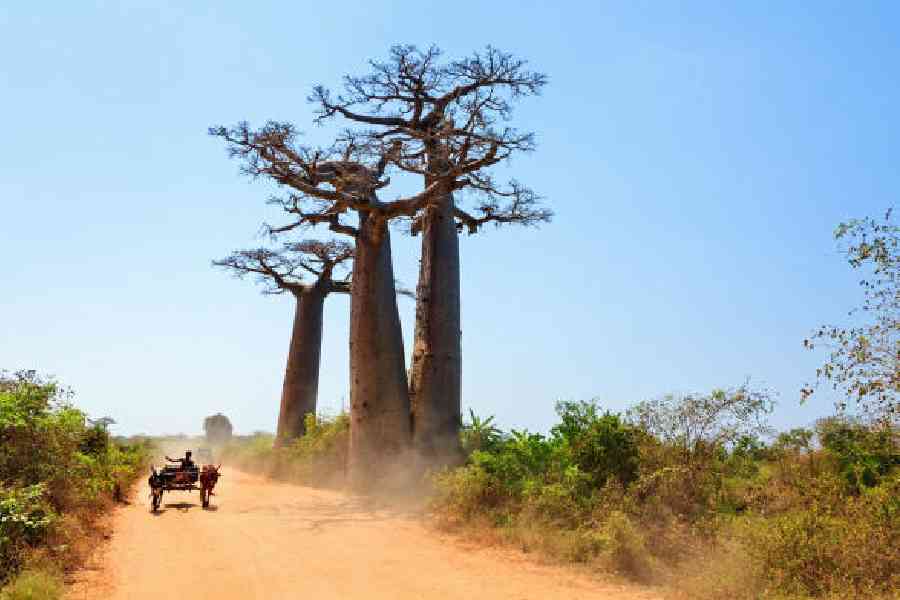Baobabs are one of the most charismatic trees on Earth. Their cartoonishly thick trunks are conspicuously oversized relative to their diminutive crowns, earning them the nickname “upside-down trees”. They can also live for thousands of years, contributing to their prominent place in cultural traditions and works of art.
For all the tales told about baobabs, though, their origin story has remained a mystery.
Scientists have debated for years how baobabs wound up in the places where they grow. Eight species exist around the world, and their distribution is unusual: one species occurs across much of mainland Africa, while six are in Madagascar. The last is found far away, in northwestern Australia.
Most researchers have hypothesised that the trees originated in mainland Africa. But findings published recently in Nature tell a different story. Baobabs instead most likely first evolved in Madagascar, where they diversified into different species. Two then embarked on long-distance oceanic journeys to distant continents.
“Madagascar is this wonderful natural laboratory,” said Tao Wan, a botanist at the Wuhan Botanical Garden of the Chinese Academy of Sciences in China and an author of the study. “In the case of baobabs, some very special geographical history on the island contributed to the species’ diversity.”
Wan and his colleagues sequenced the genomes of all eight species and then used the data to understand how they evolved. They also investigated ecological factors that influenced their distribution around Madagascar.
Their results indicate that baobabs’ common ancestor most likely arose in Madagascar around 21 million years ago. Competition with other plant life and factors like altitude, temperature, precipitation and volcanic activity caused new species to emerge across Madagascar, as did fluctuating sea levels during various ice ages.
Baobabs probably also evolved a mutualistic relationship with lemurs that served as pollinators. Other relatively large animals, including fruit-eating bats and bush babies in Africa, began visiting baobabs’ nocturnal flowers for nectar. “One of the evolutionary innovations of baobabs was to exploit large, sugar-eating animals,” said Andrew Leitch, a plant geneticist at Queen Mary University of London, UK. “That’s an unusual thing for a plant to do.”
At some point, most likely around 12 million years ago, two species of Malagasy baobabs found their way to mainland Africa and Australia, where they evolved into the unique trees that grow there today. Most likely, multiple baobab seeds hitched rides as vegetation was transported by the Indian Ocean gyre, a current that circulates counterclockwise between Australia, South Asia and the eastern coast of Africa — exemplifying the species’ “fascinating and extraordinary long-distance dispersal patterns”, Leitch said.
The findings also raise conservation concerns. Two of the Malagasy species have alarmingly low genetic diversity, indicating they might lack the resilience needed to adapt to climate change. A third species is also at risk of disappearing because of interbreeding with a more widespread cousin.
These three species are already listed on the International Union for Conservation of Nature’s Red List as being in danger of extinction. The new genetic findings suggest their conservation statuses should be re-evaluated and potentially upgraded to even higher threat levels, said Ilia Leitch, a plant geneticist at the Royal Botanic Gardens in Kew.
All six of the Malagasy baobab species are also being affected by an ongoing wave of extinctions that has been occurring in Madagascar for the past 2,500 years. Researchers say that’s mostly driven by human activity. Several species of giant lemurs — some of which grew to gorilla-size proportions, and all of which probably served as key seed dispersers for baobabs — were hunted to extinction around 1,000 years ago.
While species naturally come and go across evolutionary history, “that process is being exacerbated by human intervention,” Ilia Leitch said.
NYTNS










